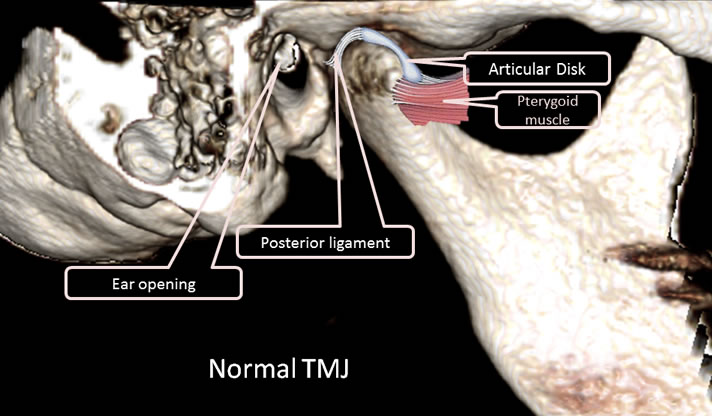by American Academy of Craniofacial Pain (AACP)
The temporomandibular joint (TMJ) is the most unique joint in the whole body as it is two joints in one. The two joints, one on each side of the head, are connected by the jawbone. One joint may influence the function of the other joint. Because they are fused in the midline, this means that you cannot move one joint without moving the other. The two temporomandibular joints can differ in size, shape, and even in function. It is possible to have a problem in one joint but have the symptoms expressed in the other joint. You could also have a pain that starts on one side of the head and migrates to the other side simply because of the relationship of these joints one to the other.
The second factor making this joint unique is that another structure dictates its function. This other structure is the teeth. The teeth are passive members of the upper and lower jaw, but they have a specific way they must fit together and interrelate. As far as the brain is concerned, tooth position has priority over joint position. This means that the TM joint is forced by the muscles to move so that the teeth will fit together properly. This can potentially cause a mal-alignment within the joint capsule. If this happens, the muscles are put in a compromising situation causing them to spasm and resulting in pain. Many of the problems you may be experiencing are the result of muscle spasm, but the cause is not a muscle problem. The muscles are simply caught between two positions: the tooth position and the jaw position.

The third factor making this joint unique is that it has an articular disc located between the ball (condyle) and the socket (glenoid fossa). This disc has a muscle attached to the front of it that pulls the disc forward as the condyle moves forward in the glenoid fossa. The disc is also attached in the back by elastic connective tissue that is much like a rubber band and pulls the disc back as the condyle moves backward in the glenoid fossa. In other words, this attachment can stretch and recoil as the jaw opens and closes. Since the disc is a separate structure and may move independently from the condyle, it can be displaced causing many problems. We call this disorder an internal derangement of the TM joint. Internal derangement of the TM joint can be a distressing syndrome of pain, limited jaw movement, clicking, popping and crepitus (a grating sound similar to the crumpling sound of parchment paper) in the joint.
This derangement may be caused by genetic pathological changes in the joint or acquired pathological changes as the result of trauma. Often, internal derangement of the temporomandibular joint is preceded by myofascial pain dysfunction that can involve moderate to severe spasms of the head, neck, shoulder and/or back muscles. A wide range of symptoms may occur, such as headaches, muscle pain, ear pain, dizziness, stuffiness and ringing in the ears, blurred vision, etc. Treatment of these conditions needs to be individualized and may include a combination of medical and dental therapies. Treatment of your particular problem will be determined by your specific diagnosis.
